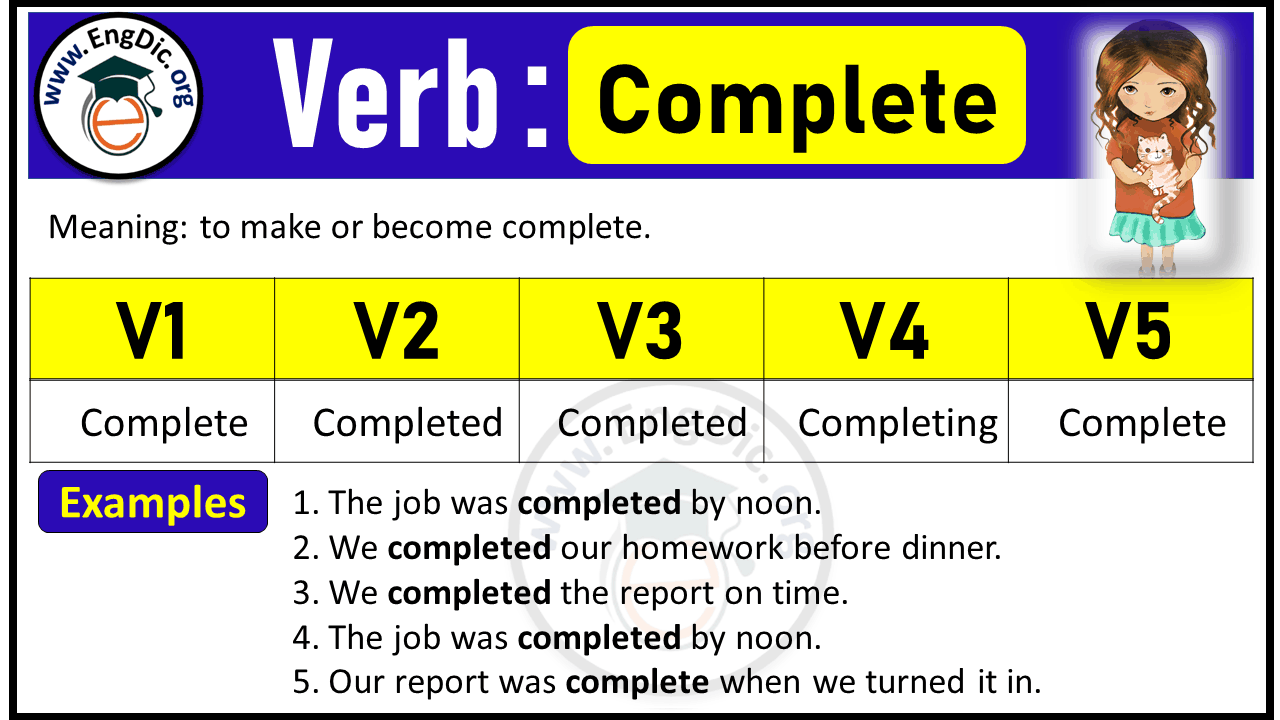Complete Past And Past Participle Form V1 V2 V3 V4 V5 Form of Complete
Do you ever find yourself puzzled by the different forms of the verb “complete”? You’re not alone.
Verbs can be tricky, especially when it comes to their various forms like past and past participle. Understanding these can make a significant difference in your writing and speaking. Imagine having the confidence to use “complete” in any context without hesitation.
You’ll discover everything you need to know about the forms of “complete”: V1, V2, V3, V4, and V5. By the end, you’ll have a clear grasp of how to use “complete” correctly and effectively. Ready to master this verb once and for all? Keep reading to unlock the secrets of “complete” and elevate your language skills.

Credit: englishgrammarhere.com
Forms Of Complete
The word “complete” can change based on tense. The base form is V1 – complete. When talking about the past, use V2 – completed. The past participle is also V3 – completed. This form is used with “have” or “has”. For actions happening now, use V4 – completing. Lastly, the fifth form is V5 – completes, often used for third-person singular subjects.
These forms help us tell when things happen. Knowing them makes talking and writing easier. They guide us in sharing clear ideas. Using the right form helps listeners understand better. Practice using these forms in sentences. It will help you in conversations.

Credit: engdic.org
Usage In Sentences
The word “complete” is used to show something is finished. In its base form, it is “complete.” When talking about the past, we say “completed.” This shows that the task was done before now. For example, “She completedher homework yesterday.”
In participle form, we say “completed” again. This is used with helping verbs. An example sentence is, “He has completedthe project.” For continuous actions, “completing” is used. Like in, “They are completingtheir tasks now.”
Common Mistakes
Many people confuse the past tense and past participle forms. Complete has different forms. Understanding these forms helps in writing clearly. The past tense is completed. The past participle is also completed. Use these forms correctly in sentences.
Sometimes, verbs change in unexpected ways. Complete does not change much. It stays simple. But other verbs can be tricky. Always check your verbs. Ensure they are right for the sentence.
Remember, practice helps. Write sentences using different forms. This builds confidence. Soon, mistakes will be fewer.

Credit: englishgrammarhere.com
Conclusion
Understanding the forms of “complete” is essential. It aids in communication. V1, V2, V3, V4, and V5 forms each serve a purpose. They help convey time and action clearly. Regular practice improves usage. Simple sentences make learning easier. Use these forms in daily conversation.
It builds confidence in English skills. Mistakes are part of learning. Keep practicing and reviewing. Soon, you’ll use these forms naturally. Remember, patience is key. Language learning takes time. Stay dedicated and curious. Your English skills will grow steadily. Enjoy the journey of mastering verb forms!






